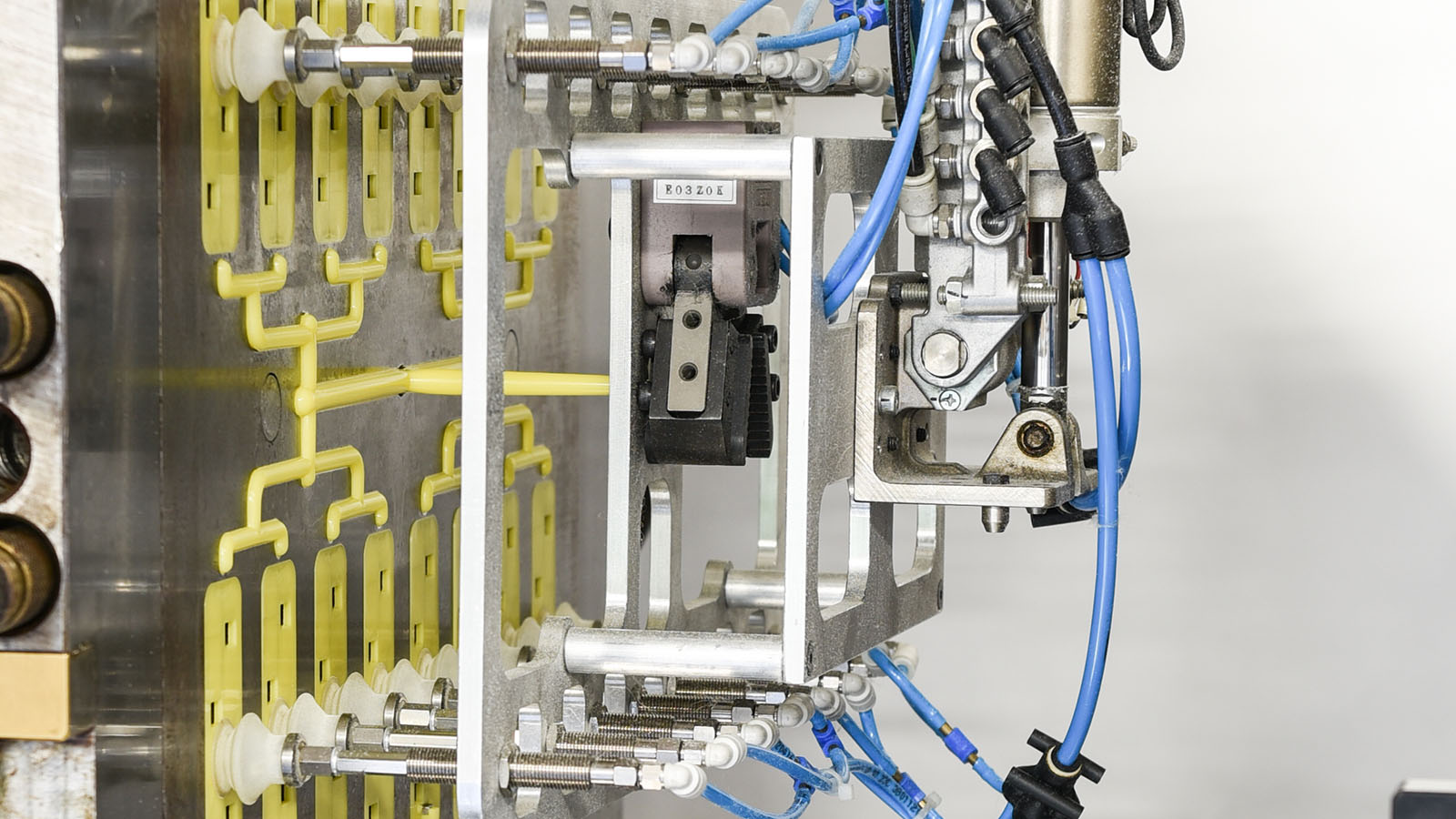Planning a plastic injection molding project is critical to its success. One aspect of that planning process is deciding how the parts will get handled after they are molded. They could be ejected off the mold and into a chute or robotics systems could control them. There may also be overmolding or insert molding operations that use robotic handling systems. When using robotics systems, it’s essential to decide how the parts and sprue are going to be handled. The way the parts will be handled drives mold design features such as gating, part ejection, and clearances. It also determines whether or not added features like docking/location systems will be needed.
Handling Parts and Sprues
There are several ways for robotics systems to handle parts and sprues. The two most conventional systems are vacuum and grippers. For purpose-built injection molding robotics systems, both vacuum and grippers are standard features that can be programmed as needed.
Vacuum Systems
Vacuum systems will typically have a rubber-like cup for making contact and sealing against the surface of the part. Vacuum systems are best suited for smooth surfaces that can be contoured or flat. The robot will have a vacuum sensor for detecting the presence of parts. When the robot removes parts from the mold, it will check that sensor and not allow the mold to close unless all the parts have been removed. This feature helps to protect the mold.
Vacuum systems do not perform as well on small contact areas, highly textured surfaces, or small rounded parts. Since vacuum systems use suction, the force holding the parts on the vacuum cups is directly related to the size of vacuum cups and the amount of vacuum. For small parts, or parts with limited points of contact for vacuum cups, the strength of the hold may not be high enough to handle the parts properly. Textured surfaces (like EDM and acid etching) and engraved features (like lettering) can cause vacuum cups to leak small amounts of air. These leaks may cause a weak hold condition or inaccurate readings on the vacuum sensor.
Grippers
Gripper systems use air or electronics to open/close an actuator in order to grip parts and sprues. Grippers are reliable for part handling and allow for more precision control. That control is critical when working with auxiliary equipment (like hot stamping, packaging, pad printing, etc.) With a gripper system, the parts are gripped and held in place tightly, allowing for accurate handling whereas a series of vacuum cups could have misalignment because of the flexing of vacuum cups. However, grippers need to have sensors built into the actuator in order to sense the presence of parts.
Gate Design
In a previous post, we discussed the different types of gating for injection molded parts. The primary factor in determining gate design is the quality of the part. Secondarily, when using robotics systems, it’s crucial to understand how the parts will get handled. For example, using an edge gate that does not break during ejection leaves the parts and sprue connected. The robot then needs to cut or break the gates to properly separate the parts from the sprues. If there’s no negative impact on part quality, it’s usually better to use an automatic style gate and avoid adding the extra complication on the robotics side.
Part Ejection
The design of the ejection system is often a delicate balance of making sure parts remove easily from the mold surface and creating a smooth transfer to robotics systems. How easily the parts come off the mold is driven by the removal method. For vacuum systems, the parts should come off easily. Typical robotic systems will have vacuum cups that can float with the ejection system. The floating mechanism allows the system to build a vacuum and hold the parts just before the parts eject. Gripper systems without any floating mechanism work the opposite way.
If parts fall off the molding surface immediately at ejection, gripper systems need to “catch” the parts as they are coming off the mold surface. Although possible, the catch may not always be consistent, and it is not ideal. If using a gripper system, it may be better to allow the parts to stick slightly on the ejection system. When the ejection system is fully extended, the parts are hanging, ready to be gripped and removed from the mold. Parts should not be held too tightly by the grippers or ejection system, as this could cause damage to the parts.
Clearances
Mold designs can become quite complicated, and the surface of the mold is not always flat. There could be large cams, hydraulics, and other features that limit the design of the robotics systems and cause long-term problems and inconsistencies in production. For example, a large cam could block a gripper system and force an engineer to use less-desirable methods for part handling. In this case, designing the cam to retract further away from the part during mold opening may allow for the use of a gripper system.
Docking & Locating
For small parts, insert molding, over-molding, or large parts with delicate features, a docking system may be required. Docking systems are features on the robot system and the mold that allows the robot to locate and lock onto the mold. The primary function is accuracy, but these features also allow the robot to push and pull against the mold without deflecting the robot arm. The push-and-pull motion is more common in automated insert loading and overmolding applications. From a mold design standpoint, you need to plan the docking features around all mold design features (like the cavities, runners, water systems, etc.)


